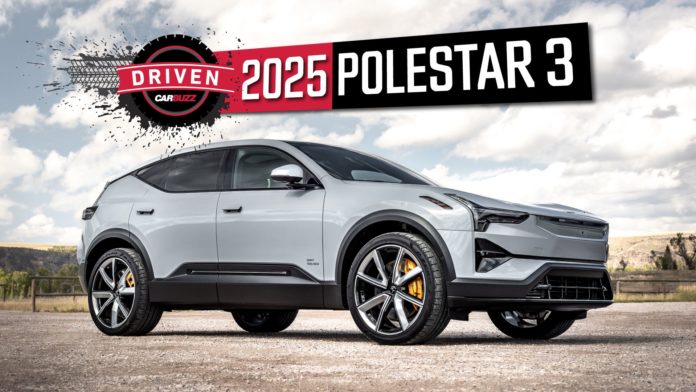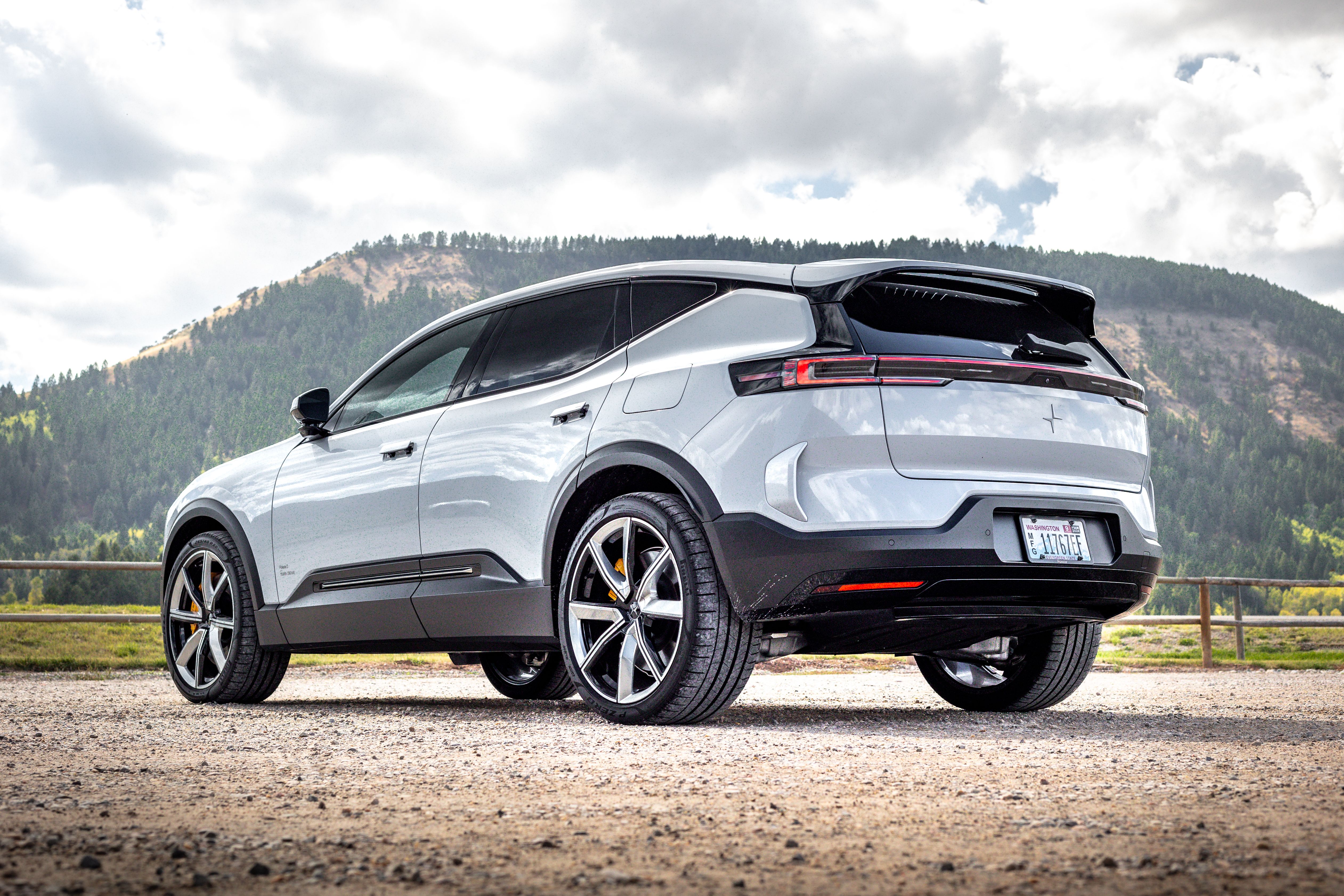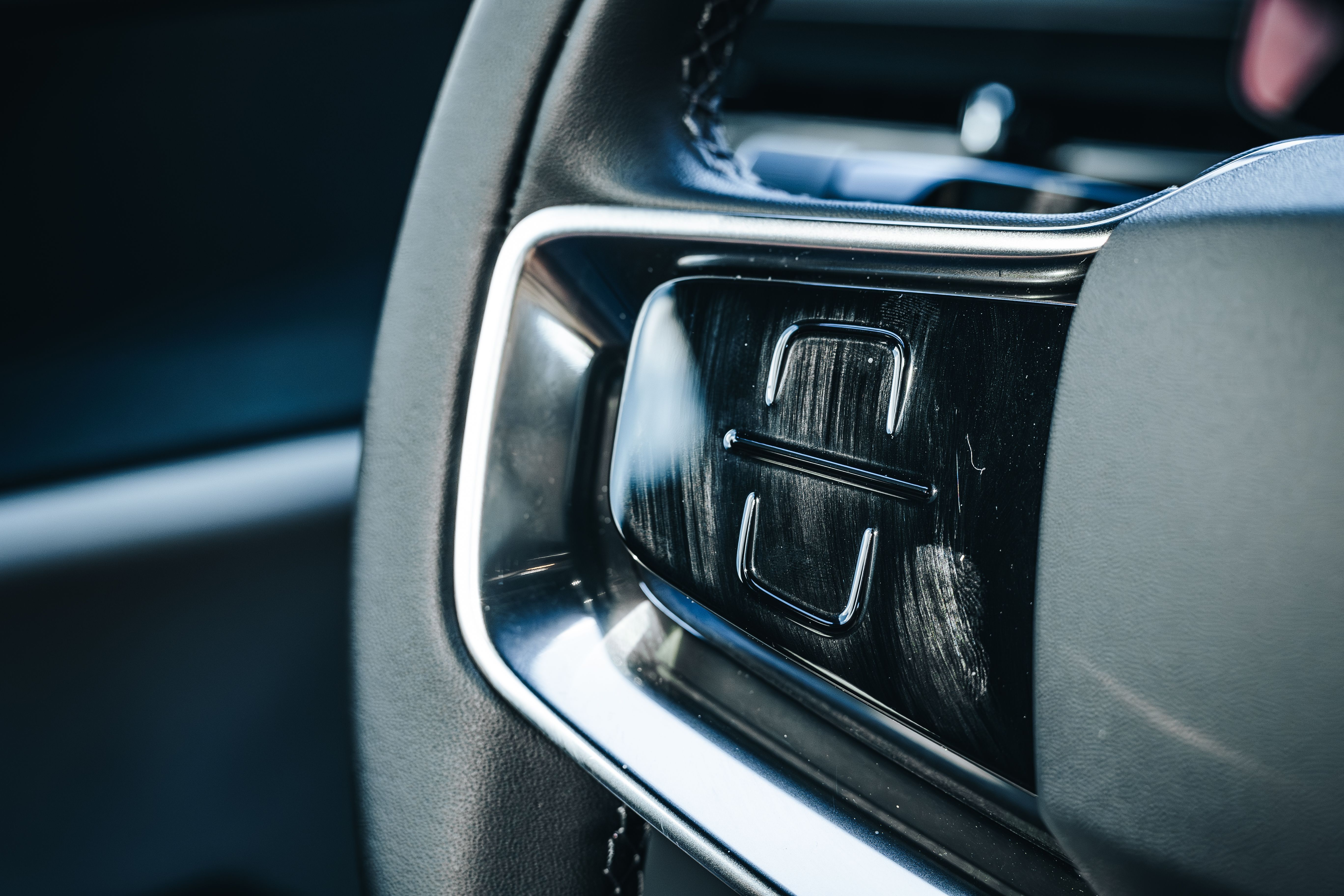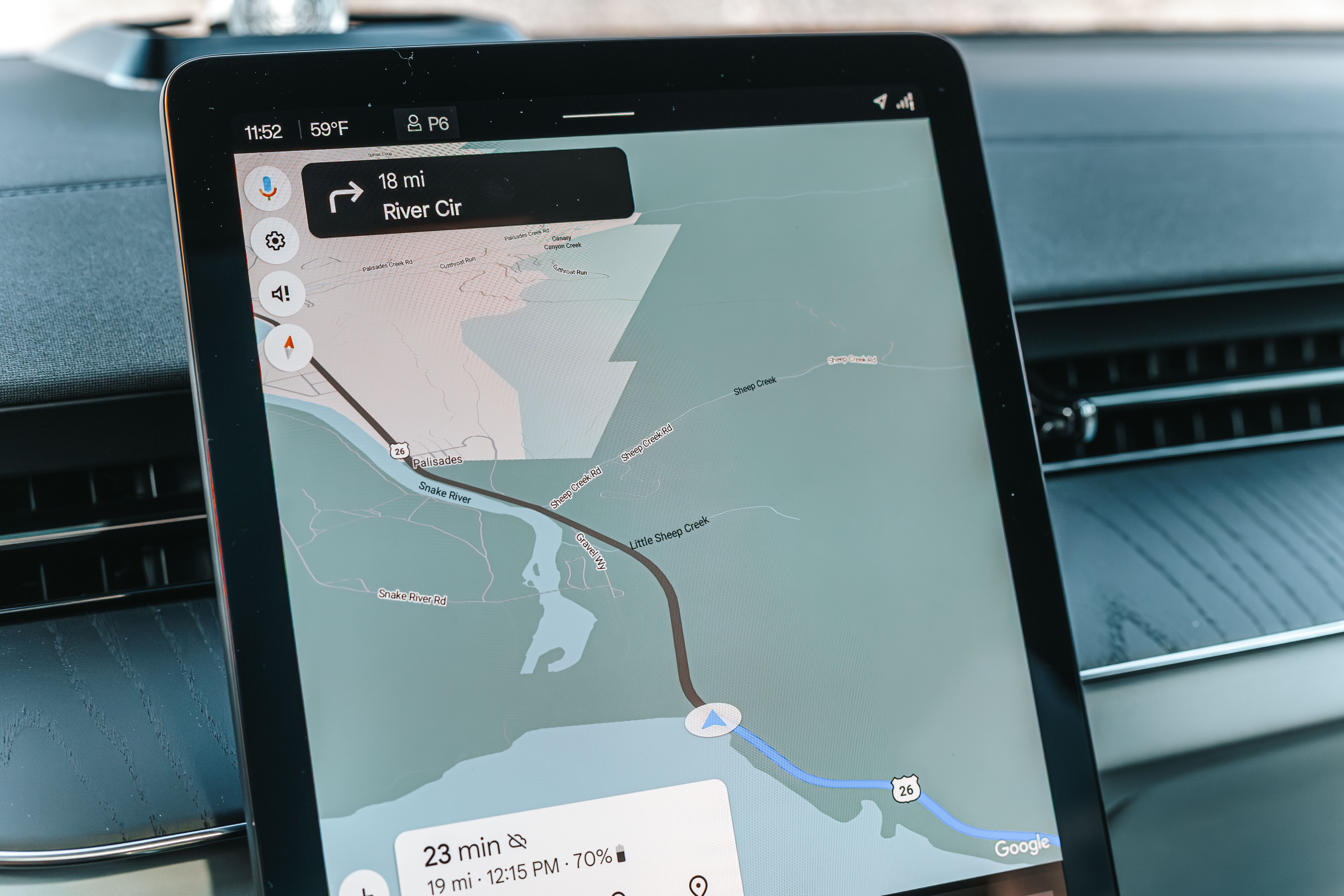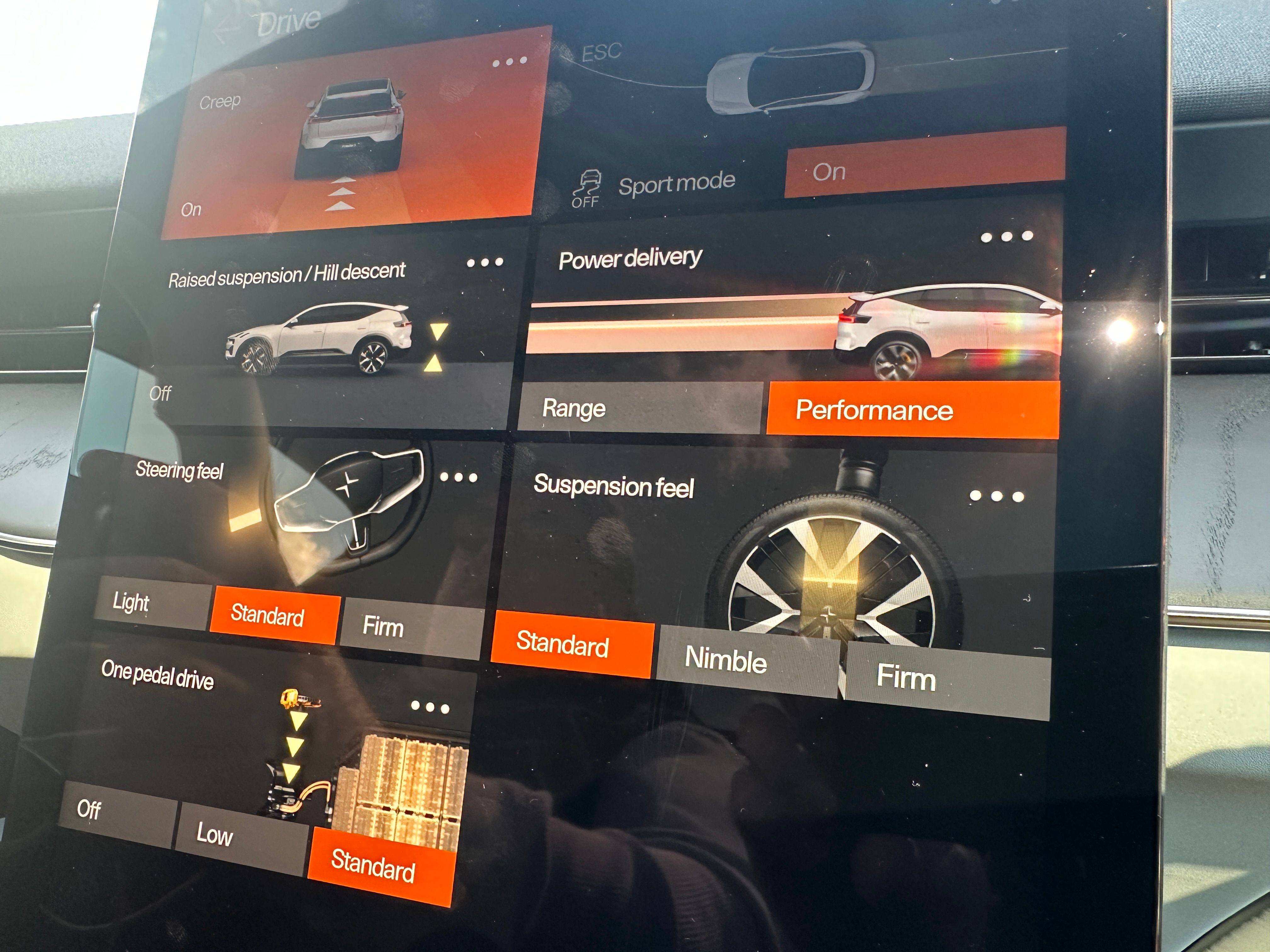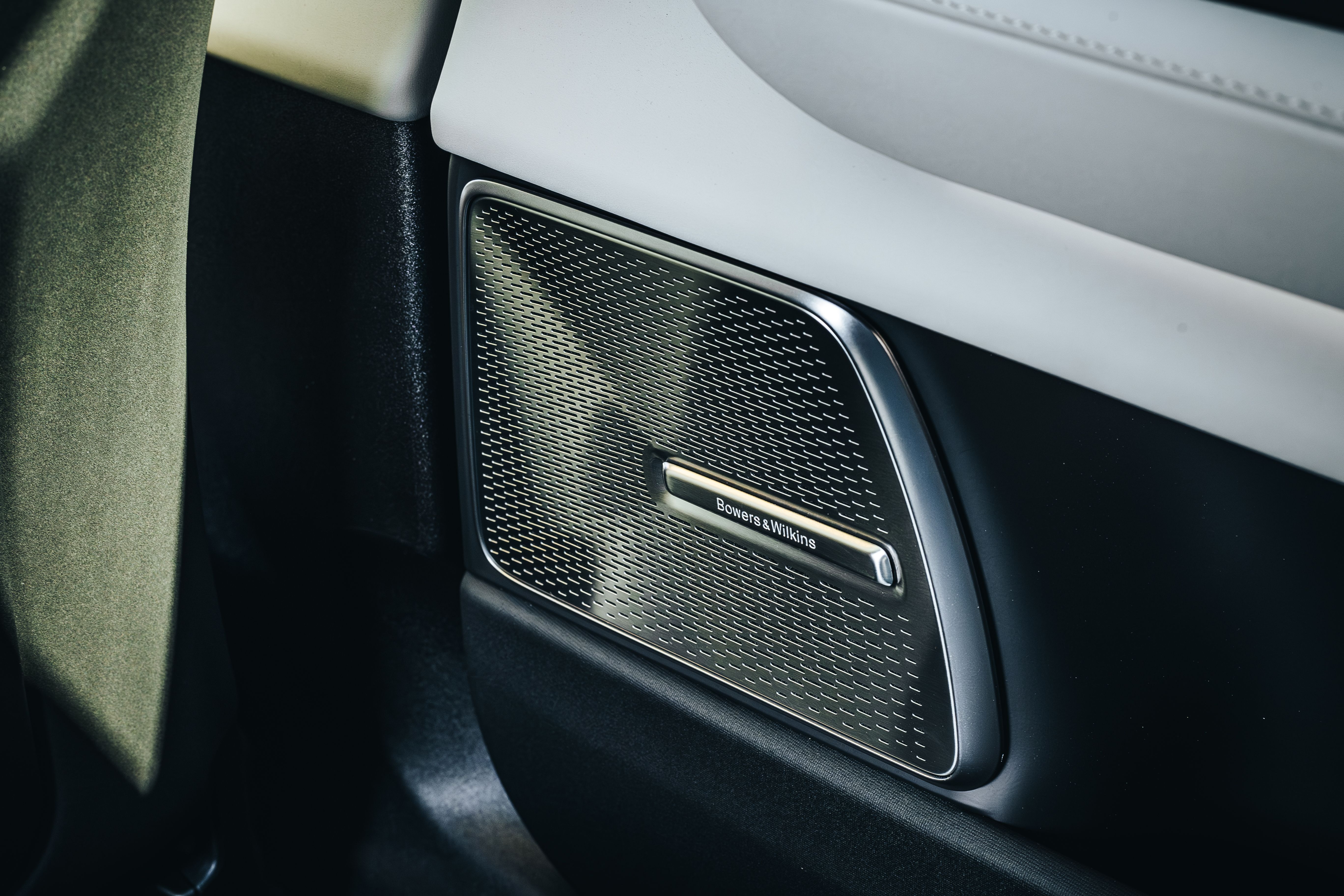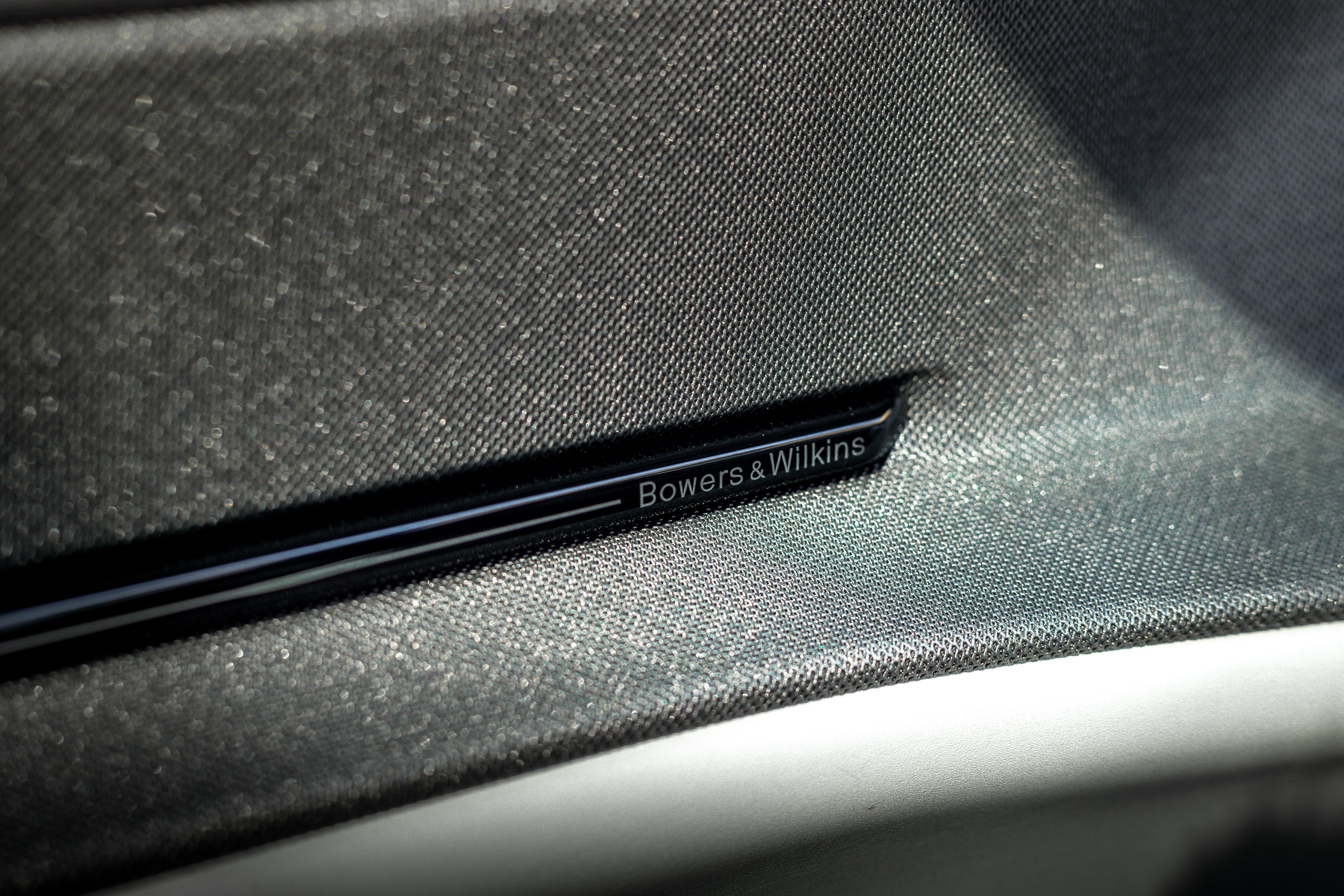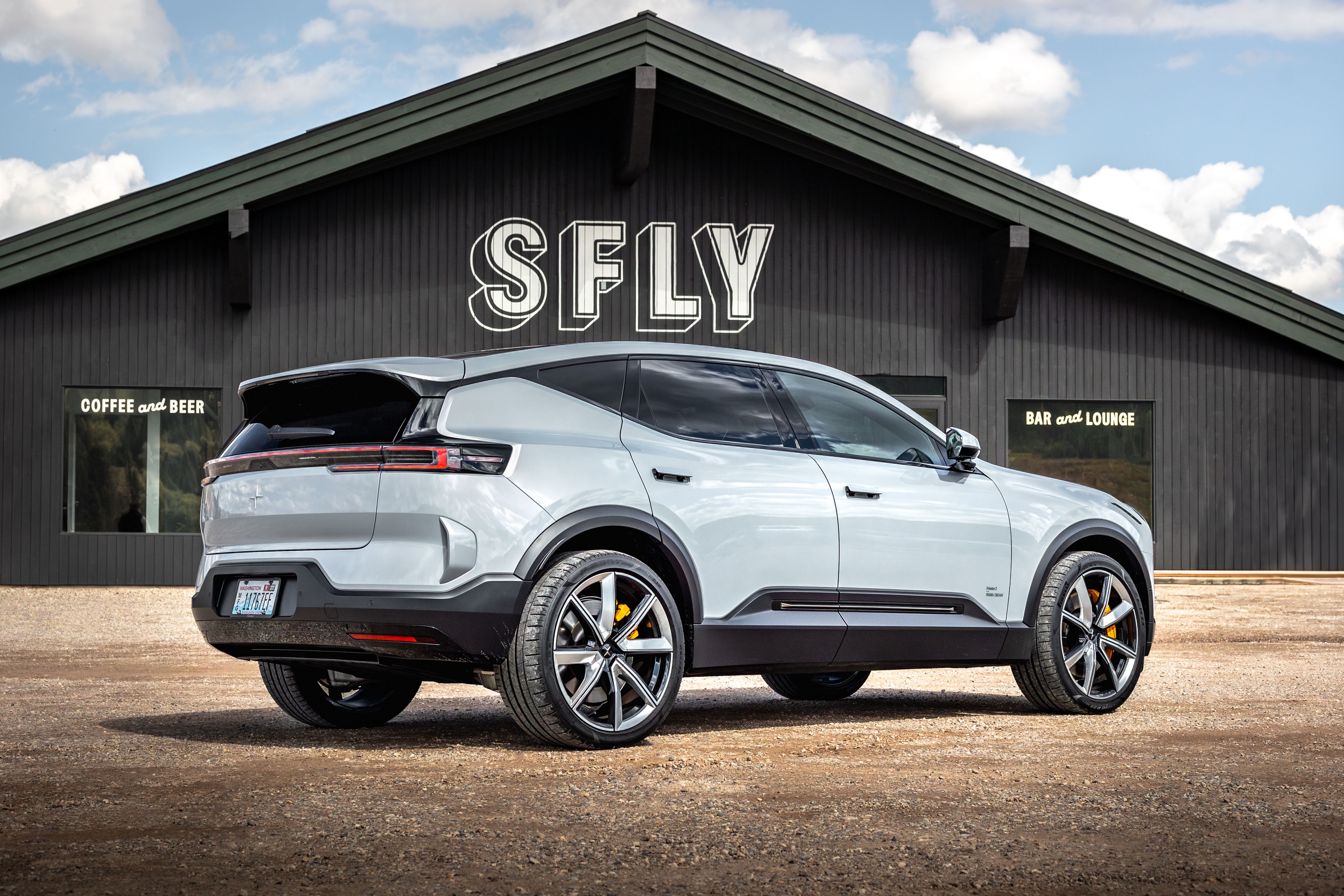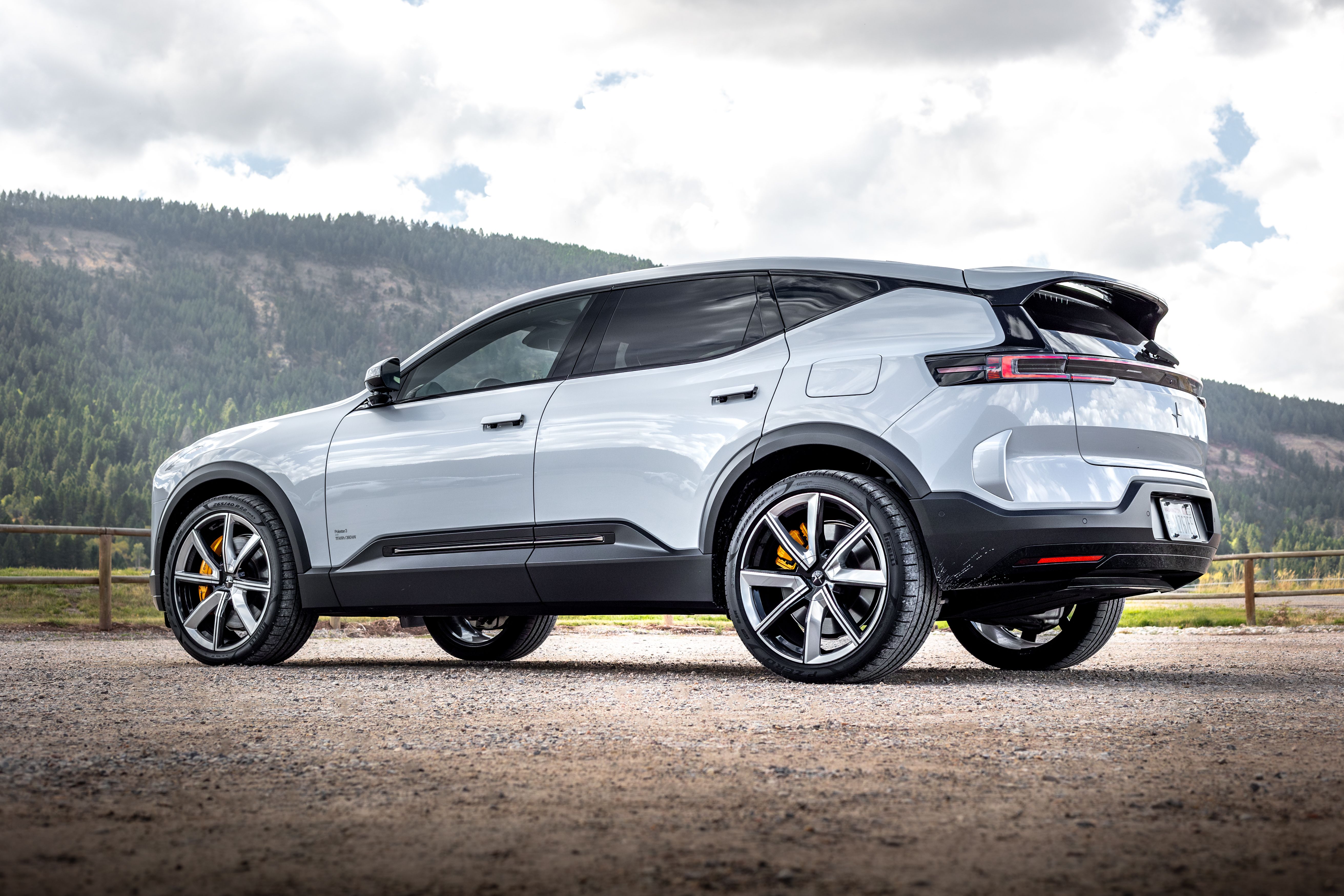Polestar has finally released the highly anticipated Polestar 3, a fully electric premium sporty crossover. The initial excitement of driving electric cars may have subsided, but the introduction of a new vehicle from a relatively young automaker determined to push things forward is absolutely worth sitting up and taking notice of. As we shift our focus to the long-term game, Polestar is steadfast in its mission to create a distinct identity separate from its parent company, Volvo.
Polestar is closely related to Volvo, but unlike a Volvo electric crossover, the Polestar 3 comes out of the box with performance features like a wealth of power, big wheels and tires, aggressive brakes, and sport modes. Like a Volvo, for better or worse (and depending on your opinion), it also comes with the same feel and level of attention to the interior and exterior design motifs.
Look at the rear-side silhouette; it’s an updated take on the classic side of Volvo’s design language. The Polestar 3 comes in two flavors: with or without the Performance Pack. All models come with a rear-bias dual motor setup but with a range and power difference, and a hefty price tag – the Polestar 3 starts at $73,400. That’s steep, but for the first model year, it comes standard with Polestar’s feature-rich Plus Pack and Pilot Pack.
We spent a couple of days with Polestar in the upscale cowboy town of Jackson Hole as a base to drive out into the vast Wyoming countryside in both versions of the Polestar 3, and returned with a lot to talk about.
First Drive events provide our initial impressions of a vehicle in a restricted environment under certain time constraints. Keep an eye on CarBuzz for our comprehensive Test Drive review which will follow soon.
Exterior: Polestar’s Best – So Far
Throughout our time with the Polestar 3, we liked its styling a little more each time we looked at it – particularly the rear quarters that evoke, deliberately or not, the C30 and V40 hatchbacks. The styling is not retro, though. It’s aggressive yet polished, with carved-out fenders and short overhangs that convey its dedication to powerful sportiness. And that’s before you notice there’s a front wing built into the hood to go with the rear aero blades and a rear wing integrated into the spoiler.
It’s wide and comes from the factory with 21-inch wheels, a full length panoramic glass roof, all LED lighting (inside and out), and those standout Swedish Gold colored Brembo brake calipers.
|
2025 Polestar 3 Exterior Dimensions At A Glance |
|
|---|---|
|
Wheelbase |
117.5 inches |
|
Length |
193 inches |
|
Width |
83.5 inches |
|
Height |
64 inches |
|
Curb Wight |
5,696 – 5,886.3 lbs |
Standard exterior features include:
- Panoramic glass roof with illuminated Polestar symbol
- Power tailgate with soft-closing and hands-free opening
- Privacy acoustic laminated glass
- LED headlights with active high beam
- Full-LED rear lightbar with light signature
- Welcome lighting and retractable door handles
Interior: Swedish Sophistication
Inside, the Polestar is roomy, airy, wonderfully stylish, and the materials and details are immediately striking. However, it’s not entirely straightforward. The first decision Polestar has made that we are struggling with is to remove as many physical switches and controls as possible. Shoving everything else, including the wing mirror and steering wheel controls, into the infotainment screen feels like a trying-too-hard-to-be-a-techie move. It makes the most minor tweaks annoying, as you literally have to stop the car and go into a menu just to move your wing mirror out a fraction of an inch.
There’s surely an argument to be made for how often people actually adjust driving position, and that memory functions will mean it isn’t an issue for many, but it doesn’t make for a great first impression when it takes a learning curve to adjust the side mirrors. The immediate good news is that the user interface is well-thought-out and just as well implemented, particularly the contextual controls. For example, when you come to a stop and put the vehicle in park, the steering wheel option becomes available on the top layer and replaces an icon that was relevant while driving.
You’ll also notice that, looking at the interior switches that remain on the steering wheel, there remain completely unmarked. It certainly adds to the slick look of the interior, and it shouldn’t take long to learn through ownership, but it requires the owner’s manual to get started. We’ll look at that more carefully when doing a full test drive review as a week should be long enough to internalize them. While it goes against our general attitude of “if we have to open the user manual to perform simple functions, it’s badly designed,” we’re not wholly against the idea if well implemented.
The annoying caveat to this is that it can only work if the physical buttons and functions are severely limited. It certainly would be frustrating if you had to learn the environmental controls without labels, for example. The question now becomes, is it worth the hassle to put the majority of controls that are typically physically operated on a touchscreen for the sake of not having any icons or words printed on or around switches? We’re not so sure. Thankfully, we note, there is a nice big volume knob in the center console.
On the plus side, the driver’s seat adjustment is one of the best we’ve come across. It’s one big wheel located down the side of the front seat that’s easy to find and manipulate, and logical to use. However, guess where the lumbar support controls are? On the touchscreen.
The second issue we have is that Polestar has sunk a lot of effort into the interior materials, whether it’s ecologically friendly Nappa leather or even more ecologically friendly vegan and recycled materials – yet the brand has chosen, for a premium $70,000+ electric SUV, to use piano black plastic in its center consoles and on the switches. You can see in the photos above how bad it is for collecting dust and fingerprint smears, and there’s a photo we haven’t included of a switch on the steering wheel as the fingerprints on it are so clear it didn’t seem smart to put it on the internet. There is no excuse for Polestar to be using piano black plastic. None whatsoever. We strongly suggest Polestar should change it for something more, well, Polestar-ish.
Technology: Big Screen, Next Level Tech
Polestar has brought in Google for its infotainment software needs, and behind the large 14.5-inch screen, Polestar uses the Qualcomm Snapdragon Cockpit Platform. The Snapdragon Cockpit Platform is where things like the contextual menus are based and powers the infotainment, while the Google system supplies the user interface (UI) and Google apps.
The Google system does a great job of enhancing the user experience with familiar and intuitive features. The bold and obvious tiled UI is intuitive and snappy to react in the way you expect of a high-end phone or tablet.
Finding the settings you need is equally intuitive as you go into the second layer of the menu system, and, of course, Google apps for the majority of services you might use are seamlessly built in. For example, we prefer Tidal over Spotify for music due to its higher resolution files, and it’s just a quick download away. The good news is that if you’re not into the idea of Google running your life and choose Apple instead, wireless CarPlay is built in.
Sound System: Demands Its Own Subheading
As we mentioned in the introduction, the Plus Pack and Pilot Pack come standard for the first model year, and that’s a big list of extra features – including a monstrous and incredibly well-integrated 25-speaker Bowers & Wilkins audio system with Dolby Atmos.
|
Additional Equipment Standard On Launch Models |
|
|---|---|
|
Plus Pack |
Pilot Pack |
|
|
Using a lot of speakers in a car (and 25 is a lot of speakers), then giving the system 1,610 watts could easily be a mess of sound, but the engineering that’s gone into matching the car and system is exceptional. You’ll notice the tweeter on the dashboard is raised, and that’s the level of detail Bowers & Wilkins has gone to. The engineers didn’t want the sound to bounce off the concave windscreen while minimizing being muted by the dashboard. The result is super-clean treble that threatens to be shrill but never quite gets there.
The mids are about the fullest and most detailed we’ve experienced in a car outside of a Rolls-Royce, and the separation of instruments generated from a two-channel Spotify standard-res file through the 25 speakers is impressive enough (including headrest speakers), but put through a hi-res FLAC file from Tidal and the whole system lights up. The system is incredibly cohesive, and we can’t wait to get a full week with the car and push the system with spatial audio tracks and a full range of music.
A lot of car audio falls down with the bass, and it ends up boomy and overwhelming, no matter what music you’re listening to. In the 2025 Polestar 3, it’s incredibly well controlled to the point you wouldn’t believe the subwoofer is in the trunk. Instead, the sound rises up from underneath and the bass is tight and punchy when it needs to be; it goes low and right through your body when demanded by a track.
Powertrain: Power + Range Or More Power, Less Range
It’s a simple choice to make, and we thank Polestar for it. Polestar advertises a range of “up to 315 miles” via it’s two electric motors and a 400-volt, 111-kWh battery. The Performance Pack includes a software-induced bump from 489 horsepower to 517 hp and with an extra dose of torque – but there’s more to it than just that. It also includes a Polestar Engineered chassis, 22-inch Performance forged alloy wheels, Swedish gold valve caps and seatbelts, laser-etched interior light ling in gold, and special Pirelli P-Zero tires.
|
Polestar 3 Performance Specs and Powertrain Overview |
||
|---|---|---|
|
Long Range Dual Motor |
Long Range Dual Motor With Performance Pack |
|
|
Battery |
400V lithium-ion |
|
|
Capacity |
111 kWh |
|
|
Charge Time |
10-80% in 30 min (250 kW) |
|
|
Motors |
Dual Motor |
|
|
Horsepower |
489 hp |
517 hp |
|
Torque |
620 lb-ft |
671 lb-ft |
|
0-60 |
4.8 seconds |
4.5 seconds |
|
Towing Capacity |
3,500 lbs |
|
|
Energy Consumption (EPA) |
38.9 kWh / 100 miles |
43.2 kWh / 100 miles |
|
Range (EPA Estimate) |
Up to 315 miles |
Up to 279 miles |
Again, there’s a huge amount of technology going into the powertrain, including a torque vectoring dual clutch system on the rear axle which, unlike most torque vectoring systems, doesn’t only apply brakes to the inside wheel. Instead, it accelerates the outer rear wheel to sharpen the steering.
When pushing the Polestar 3 around with enthusiasm, the powertrain is biased to the rear motor for that sporty dynamic; when cruising, the rear section is disconnected, so the car is running as efficiently as possible. With the Performance Pack upgrade, going from a cruising speed of around 40 mph to overtake with a big dose of throttle, there is no clue the front and rear have reconnected other than an instant and relentless burst of power. Mash the pedal to the carpet from 50 mph, and it’s like flicking a switch for the power to come on. It’s sudden, and it’s manic, but if you’re a bit more caring about passenger comfort, then being smoother on the pedal brings smoother results.
On The Road: Swift And Comfortable
We headed out on the road with a Performance Pack equipped Polestar 3 first, and it has the same feel to the way it drives as the Polestar 2 sedan. That means it doesn’t feel like it weighs a chunky 5,886 pounds – which is over 1,000 lbs more than the Polestar 2. Around town and cruising out into the countryside, it’s a pleasure to drive and, again, like the Polestar 2, the one-pedal driving experience is beautifully implemented and easy to get used to. And to that point, it’s the best way to drive a Polestar until you decide to play with the sporty side of its personality on a back road.
On a back road, the Polestar 3 is well planted on the road and agile, even before you switch it into sport mode, which is named ‘Agile’ – our favorite name for a drive mode on any car, yet. Switch modes on the Polestar 3, and the air suspension stops prioritizing ironing out the road’s imperfections and stiffens up to keep the chassis flat through enthusiastic cornering. The throttle response also tightens up, and you can take full advantage of the big power available.

Add CarBuzz to your Google News feed.
For backroad hooliganism, the Polestar 3 doesn’t have quite the engagement of a full red-blooded gas performance crossover or SUV as, while well hidden, the weight is there and the driver aids are doing a lot of work for the driver. However, it’s not soulless and is a lot of fun to poke around. We’re looking forward to get it onto more twisting roads for a proper test drive review.
Switching to the non-performance pack Polestar 3 was not a disappointment. On long, sweeping country roads, it felt like the same car with less power on tap. It’s far from too little power, though – it’s swift and there’s plenty for safe overtaking and freeway cruising. Heading back, we soaked in the luxury side of the Polestar 3 with its airy-feeling cabin and huge glass roof; the wonderful Bowers & Wilkins sound system helped by how the cabin suppresses outside noise; the simple yet comfortable seats; and the lovely ride quality in Normal mode.
Conclusion: Time To Bring Up Tesla
Scandinavian design is no stranger to minimalism. Volvo has been using a portrait-style screen for ages, and automakers have been trying to slip getting rid of switches past us for years. So, there’s no reason to suggest Polestar is copying Tesla’s homework. However, that all makes the Polestar 3 ripe for comparison with the Model X.
Except, the Polestar 3 is well-built, full of fantastic materials (except that piano black plastic), provides exceptional ride quality, high-end and user-friendly tech that doesn’t make promises it can’t keep, and can tackle a corner with enthusiasm. It’s also available in a variety of interesting colors, and you won’t be behind or in front of one at every traffic light. It’s the winner in this comparison by some margin – and that’s before taking into account that it has a cheaper starting price: The base Model X costs $79,990, while the Polestar 3 starts at $73,400, excluding destination. Adding the Performance Packs takes the price to $79,400.
Step away from that comparison, and the Polestar 3 does a fantastic job of cementing the brand as an EV innovator in the premium space. We’re not convinced by putting the vast majority of switches into the infotainment screen, but we’re going to keep the jury out until we complete a full test drive review.
At the price, our initial impression is that there’s value for the first model year with the Plus Pack and Pilot Pack being added as standard. It bumps the Polestar 3 from the premium to luxury band, and rounds out a tech-lover’s dream car.

